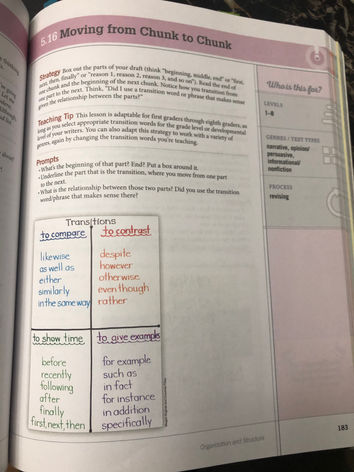Literacy
Reading & Writing Instructional Resources


What does is mean to be literate? How can we, as educators, promote and grow the literacy development of our students? Below you'll find explicit strategies for reading and writing, in addition to various academic articles to aid your understanding of literacy instruction. Explore the science of reading and structured literacy under the Teacher Research tab to learn more about the content and principles of instruction that will help you meet the literacy needs of your students.

Learning to Read: Phase Theory
Ehri & colleagues (1996, 2014, 2020) conceptualize the development of learning to read into four phases: pre-alphabetic, early alphabetic, later alphabetic, and consolidated alphabetic. Knowing and understanding these phases can aid in recognition of student achievement and progress and guide instruction.
Phase 1: Pre-Alphabetic
Phase 2: Early Alphabetic
-
Partial phonemic awareness
-
Some sound-letter sound correspondence
-
Incomplete phonemic awareness
-
Little decoding ability
Phase 3: Later Alphabetic
-
Full phonemic awareness
-
Increasing decoding abilities
-
Some automatic word recognition
-
Stronger sound-letter correspondences
Phase 4: Consolidated Alphabetic
-
Proficient decoding skills
-
Continued development of sight word recognition
-
Uses orthographic mapping
-
Advanced phonemic awareness skills
-
Lacks phonemic awareness
-
Recalls words by features
-
Beginning to learn letters
-
No sound-letter correspondence
-
Knows general print concepts
Planning Reading Instruction: Tackling the Big 5
Check out the following resources for planning reading instruction based on the National Reading Panel's 5 components for effective reading instruction
Interested in testing your literacy knowledge? Take this practice test!
Reading Strategies
Check out these strategies from Jennifer Serravallo's The Reading Strategies Book!


Choosing the "just-right" book means more than choosing a book based on reading level.

Reread the title of the book and think about how that connects to aspects of the book

Preview the terms and definitions that you'll come across in the text.

Point under each word as you read.

Instead of reading word by word, try to scoop up a few words at a time

Try not to breeze through a text without thinking and asking yourself if you understand.

Planning Writing Instruction
Writing is a versatile skill which does not develop naturally. Rather, flexible and effective writing skills require explicit and direction instruction. The resources below aim to expand knowledge on good writing instruction and what general education teachers can do to improve their practice.

Writing Continuum: The writing continuum can be used to analyze your students' writing for a deeper understanding of a student's developing writing skills and guide classroom instruction.

6 Principles of The Writing Revolution
-
Students need explicit instruction in writing, beginning in the early elementary grades
-
Sentences are the building blocks of all writing
-
When embedded in the content of the curriculum, writing instruction is a powerful teaching tool
-
The content of the curriculum drives the rigor of the writing activities
-
Grammar is best taught In the context of student writing
-
The two most important phases of the writing process are planning and revising
Enhance your analysis of student writing through the use of the Monster Spelling Test!
Writing Strategies
Check out these strategies from Jennifer Serravallo's The Writing Strategies Book!








